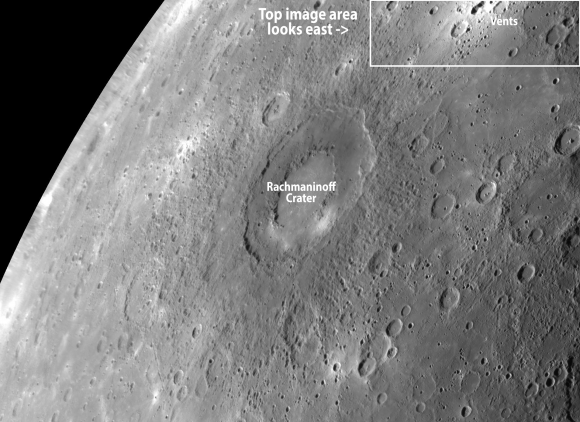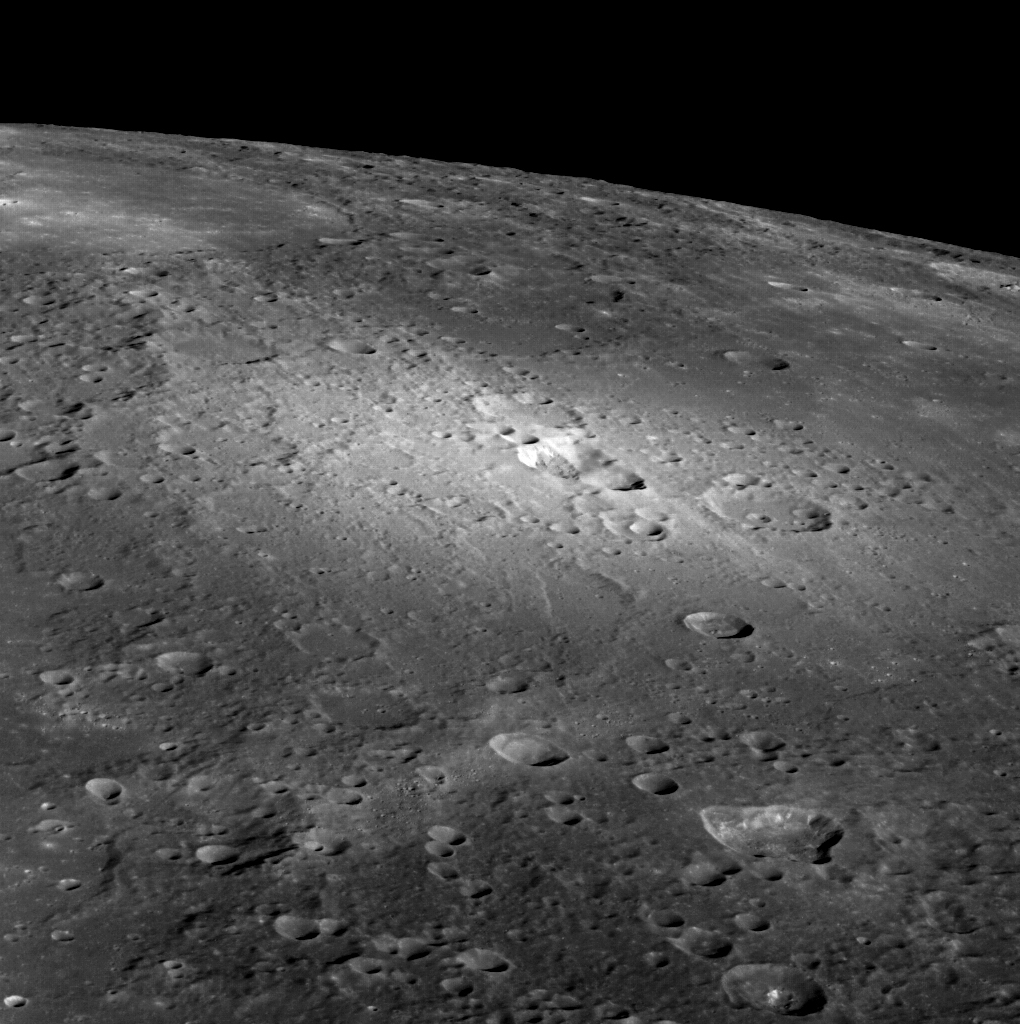Here on Earth we’re used to seeing volcanoes as towering mountains with steam-belching peaks or enormous fissures oozing lava. But on Mercury volcanic features often take the form of sunken pits surrounded by bright reflective material. They look like craters from orbit but are more irregularly-shaped, and here we have a view from MESSENGER of a cluster of them amidst a rugged landscape that stretches all the way to the planet’s limb.
The image above shows a group of pyroclastic vents on Mercury, located just north and east of the 180-mile (290-km) -wide, double-ringed Rachmaninoff crater. The vents lie in the center of a spread of high-reflectance material, sprayed out by ancient eruptions. This bright blanket of material stands out against Mercury’s surface so well, it has even been spotted in Earth-based observations!
An older vent can be seen at the bottom right, looking like a crater but with non-circular walls. North is to the left.
So why do Mercury’s volcanoes look so different than Earth’s? Planetary scientist David Blewett from Johns Hopkins University Applied Physics Laboratory explains:
The discovery and investigation of vents like these is extremely valuable to scientists, as they provide information on Mercury’s formation, composition, and the nature of volatiles in its interior. (Plus the oblique angle is very cool! Makes you feel like you’re flying along with MESSENGER over Mercury’s surface.)
See below for a wider view of the region and context of the placement of these vents to Rachmaninoff.

See these and more images from Mercury on the MESSENGER website here.
Added 9/24: Want to see a volcanic vent in 3D? Click here.
Image credit: NASA/Johns Hopkins University Applied Physics Laboratory/Carnegie Institution of Washington

